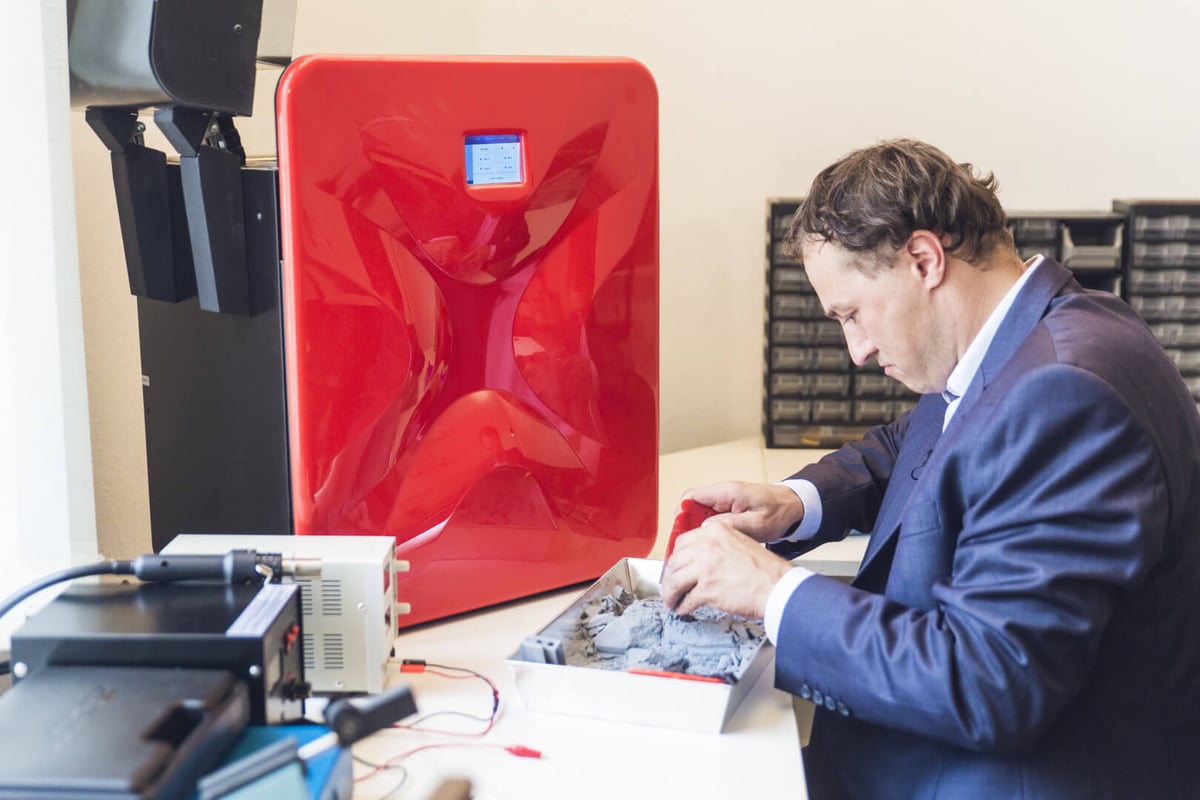Data glasses are a new smart wearable made with an SLS printer which are useful for industrial applications. Would you wear a pair?
A researcher from Germany, Professor Rigo Herold, has developed a smart wearable called “Data Glasses”.
These glasses use augmented reality (AR) technology, combining virtual 3D reality with the real world. Herold believes there could be many useful applications in the future, from providing people with subtitles for foreign movies to enriching walks around museums.
But right now, Herold believes the glasses will be particularly useful in industrial applications.
The Data Glasses were developed in Germany using a Sinterit Lisa selective laser sintering (SLS) 3D printer to ensure precise assembly and comfort for wearers. Herold designed the glasses to match industry requirements, making sure the rims are lightweight but also precise.
They also had to be durable and able to cope with high temperatures. Herold experimented with 3D printing and tried fused depositon modelling (FDM) technology before deciding on SLS, which can guarantee optimum designs.
Benefits of 3D Printed Data Glasses
“Data glasses are composed of complex, precisely positioned optical components – among others sensors and mirrors,” he explains.
“To ensure uninterrupted sharpness of the virtual image, all optical components must be set in with the highest precision. The filaments used in the early data glasses printed in 3D technology were not accurate enough.”
“To ensure uninterrupted sharpness of the virtual image, all optical components must be set in with the highest precision.”
The glasses are particularly useful for industrial workers who require regular, real-time information but need to keep their hands free for working.
In fact, the Data Glasses can provide information such as sudden jumps or drops in temperature and pressure. And when working on complex systems, AR users can review complex components more easily.
The device can also display environment parameters, detect airborne contaminants, and even suggest appropriate responses.
These glasses are not a new concept; Google Glass was a high-profile experiment and failure. What’s new about Data Glasses is that they’re a slimmed down, 3D printed, and standardized version of the technology. Herold is making the glasses easier to wear, whether over a helmet or directly on your head.
Source: Sinterit

License: The text of "These AR Data Glasses Are Made With SLS 3D Printers" by All3DP is licensed under a Creative Commons Attribution 4.0 International License.